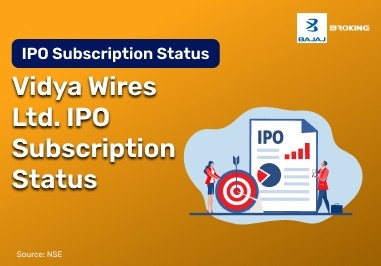The monsoon season plays a role in India's economy and, by extension, the stock market. The arrival and distribution of monsoon rainfall influence agricultural output, which affects rural income and demand. This, in turn, can have a ripple effect on various sectors of the economy. While a good monsoon is generally associated with positive economic sentiment, the direct correlation between monsoon performance and broader stock market indices has shown varying patterns over time. The impact is complex, with multiple factors contributing to market movements beyond just rainfall patterns.
Monsoon: India’s Natural Boost to the Economy
The monsoon, specifically the Southwest Monsoon, is a significant natural event for India. It brings a substantial portion of the country's annual rainfall, which is important for agriculture. A sufficient and well-distributed monsoon can support healthy crop yields, contributing to food security and rural prosperity. Increased agricultural production can lead to higher rural incomes, which often translates into increased demand for goods and services across various industries. This natural phenomenon influences the overall economic trajectory of the country, impacting inflation, consumption patterns, and the performance of sectors connected to rural demand.
Historical Trends: Monsoon Rainfall and SENSEX Don’t Always Align
Historically, the relationship between monsoon rainfall and the performance of the SENSEX, India's benchmark stock market index, has not always shown a direct alignment. While a good monsoon is generally viewed as beneficial for the economy, its immediate and consistent impact on the broader stock market can be less pronounced. Data from various periods indicates that years with strong monsoon rainfall have not consistently translated into significant SENSEX gains. Conversely, some years with below-normal rainfall have seen the market perform positively, influenced by other economic or global factors.
Consider These Observations:
In 2010, strong and well-distributed rainfall coincided with SENSEX returns over 14% between June and November.
In 2015, below-normal rainfall (19% below average in July-August) saw the market decline by 4% over the same period.
In 2018, another year with below-normal rainfall, market returns dropped by 2.5% between June and November.
A Moneycontrol analysis since 2008 suggests no consistent correlation between overall monsoon strength and SENSEX returns. For example, in 2024, despite rainfall being 8% above the Long Period Average (LPA), the SENSEX rose by only 1.2% between June and November.
Year
| Monsoon Performance (Relative to LPA)
| SENSEX Returns (June-Nov)
|
2010
| Strong & Well-distributed
| >14%
|
2015
| Below Normal (-19% in July-Aug)
| -4%
|
2018
| Below Normal
| -2.5%
|
2024
| 8% Above LPA
| 1.2%
|
This suggests that while monsoon is important for the underlying economy, its effect on the SENSEX is often intertwined with other market drivers, and a simple one-to-one correlation is not always present.
Nifty 50’s Performance Shows Limited Link to Monsoon Patterns
The Nifty 50, another key Indian stock market index, also exhibits a nuanced relationship with monsoon rainfall patterns. Analysis of Nifty 50's performance during years of varying monsoon intensity does not consistently show a direct cause-and-effect relationship. Observations suggest that even in years characterised by higher rainfall, Nifty 50 returns have shown mixed results. Conversely, some years with lower rainfall have seen the index record significant gains, often driven by factors beyond domestic agricultural output.
Consider These Points:
Years with higher rainfall (e.g., 2013, 2019, 2020, 2022, and 2024) have shown average market returns around 8.98%.
Years with lower rainfall (e.g., 2009, 2012, 2014, 2015, and 2018) delivered a median return of 25.7%.
In 2009, with rainfall at 78% of the LPA, the market experienced a rebound, with Nifty 50 showing significant gains.
In 2020 and 2022, despite healthy monsoons, market returns were modest.
Year
| Monsoon Performance (Relative to LPA)
| Nifty 50 Returns (June-Sep)
|
2013
| Above Normal
| -4.2%
|
2014
| Deficient
| 10.2%
|
2015
| Deficient
| -5.8%
|
2019
| Above Normal
| -3.8%
|
2020
| Above Normal
| 17.4%
|
2021
| Below Normal
| 13.1%
|
2022
| Below Normal
| 3.1%
|
The Nifty 50, being a broader market index, is influenced by a range of factors including global liquidity, corporate earnings, interest rates, and geopolitical events. While the monsoon impacts the rural economy, its overall weight in the aggregated Nifty 50 performance has seen a decline as India's economy diversifies beyond agriculture. The timing and spatial distribution of rainfall in July and August remain crucial for specific sectors linked to rural demand, but the broader index may not always mirror these trends directly.
Link Between Monsoon and Short-Term Market Movements
The connection between monsoon and short-term market movements in India is present, though not always as a direct, dominant factor. Early monsoon forecasts, especially positive ones, can sometimes generate positive sentiment in specific sectors. However, actual short-term market reactions often depend on the spatial and temporal distribution of rainfall rather than just the overall quantity. For instance, good rainfall in key agricultural regions during critical sowing periods can prompt a positive response in related stocks. Conversely, a prolonged dry spell or uneven rainfall distribution might lead to short-term cautiousness in those same sectors. Other daily news, global cues, and corporate earnings also heavily influence immediate market movements.
Why is this Relationship Not Strong?
The relationship between monsoon performance and broader stock market indices in India is not consistently strong due to several contributing factors:
Declining Agricultural Share in GDP:
Agriculture's contribution to India's Gross Domestic Product (GDP) has steadily decreased over the decades. While it was around 25% in the 1990s, it has fallen to approximately 14-18% in recent years. This structural shift means that even a significant impact on agriculture might have a proportionally smaller effect on the overall national economy and, consequently, on large, diversified stock market indices like the Sensex or Nifty 50.
Economic Diversification:
The Indian economy has diversified significantly. Sectors such as manufacturing, services (including IT and finance), and infrastructure now contribute substantially to the GDP. Many of these sectors are less directly dependent on monsoon rainfall for their operations or revenue streams. As these sectors gain prominence in the overall economic landscape, their performance, driven by other factors, can offset the impact of monsoon variations on the broader market indices.
Market Anticipation and Global Factors:
The stock market is forward-looking. Forecasts and expectations about the monsoon are often priced into stock valuations well in advance. By the time the actual monsoon unfolds, its impact might already be largely discounted. Furthermore, global economic trends, international capital flows (Foreign Portfolio Investments), crude oil prices, interest rate decisions by central banks, and geopolitical events can exert a more dominant influence on market sentiment and direction than domestic weather patterns.
Policy and Irrigation Buffers:
India has developed better infrastructure for irrigation and improved contingency plans for managing drought situations. Government policies, including minimum support prices (MSPs) for crops, subsidies, and rural employment programs (like MGNREGA), also help mitigate the economic damage of an uneven monsoon. These measures provide a buffer that reduces the direct economic fallout of monsoon variability, thereby lessening its impact on the stock market.
Sectoral Versus Overall Index Impact:
While certain sectors, especially those directly linked to agriculture and rural consumption, remain sensitive to monsoon performance, their individual impact can be diluted when looking at broad market indices. A diversified index comprises companies from various sectors, many of which are largely monsoon-agnostic (e.g., IT, pharmaceuticals, oil and gas). Therefore, positive or negative movements in monsoon-sensitive sectors might not significantly alter the trajectory of the entire index.
Urban vs. Rural Demand:
While a good monsoon boosts rural demand, urban consumption patterns, often driven by different economic factors, also play a significant role in overall market performance. Urban demand is less directly tied to agricultural output and monsoon cycles.
How Monsoon Influences Inflation Rates in India?
The monsoon plays a role in influencing inflation rates in India, particularly food inflation. Agricultural output, which is heavily reliant on monsoon rainfall, directly impacts the supply of food grains, vegetables, and other essential commodities. The timing and spatial distribution of rainfall are important. Rainfall in July and August is crucial for Kharif (monsoon) crops. Deviations from normal patterns during these critical months can affect crop outlook and lead to interim price pressures. The Wholesale Price Index (WPI) for food articles also reflects these changes.
Here is how monsoon conditions can affect inflation:
Monsoon Condition
| Impact on Agricultural Output
| Impact on Food Prices
| Impact on Overall Inflation (CPI)
|
Good Monsoon
| Healthy production, ample supply of food items
| Stabilise or reduce food prices
| Contributes to lower overall inflation
|
Poor Monsoon
| Lower yields, reduced supply of food items
| Price increases, especially for staples
| Pushes up food inflation, impacts CPI
|
Key Sectors Affected by Monsoon in India
Monsoon rainfall directly or indirectly affects several key sectors of the Indian economy.
1. Agriculture Sector
The agriculture sector is highly dependent on the monsoon. About half of India's cultivated land relies on rainfall for irrigation. A good monsoon leads to sufficient water for crops, resulting in higher yields for Kharif crops like rice, pulses, and oilseeds. This impacts farmer incomes and overall agricultural GDP.
2. Fast-Moving Consumer Goods (FMCG)
The FMCG sector is influenced by the monsoon, especially companies with a significant rural presence. Higher rural incomes, resulting from good agricultural output, often translate into increased demand for FMCG products, ranging from daily necessities to discretionary items. Conversely, a weak monsoon can dampen rural consumption and affect sales volumes.
3. Automobile Industry
The automobile industry, particularly segments like two-wheelers and tractors, sees an impact from the monsoon. A positive monsoon can lead to increased farmer prosperity, which often fuels demand for these vehicles in rural areas. Tractor sales, for instance, are often seen as an indicator of rural economic health, directly linked to agricultural prospects.
4. Banking and Rural Lending
The banking and rural lending sector is affected by the monsoon. A good monsoon can lead to higher farm incomes, improving the repayment capacity of agricultural loans and reducing non-performing assets for banks and rural financial institutions. It also supports increased savings in rural areas, strengthening the rural credit cycle.
5. Energy Sector: Power and Renewables
The monsoon has an impact on the energy sector, especially hydropower and renewable energy sources like wind power. Enough precipitation is essential for reservoir levels, which affect the production of hydropower. Increased wind energy output is a result of strong monsoon winds. A robust monsoon can lessen dependency on thermal power and promote a balanced energy mix.
Conclusion
The monsoon season is a significant factor for India's economy, primarily due to its impact on agriculture and rural demand. While a good monsoon can foster positive economic sentiment and support specific sectors like FMCG and automobiles, the direct correlation with broader stock market indices like the Sensex and Nifty 50 is often complex and not consistently strong. This is partly due to the increasing diversification of the Indian economy, the market's forward-looking nature, and the influence of global factors. Understanding these dynamics is important for assessing the monsoon's role in the wider economic and stock market landscape.
Disclaimer: This article provides general information. It's not professional tax or investment advice. Market laws change; consult a qualified advisor for personalised guidance. We are not responsible for actions based on this content.














